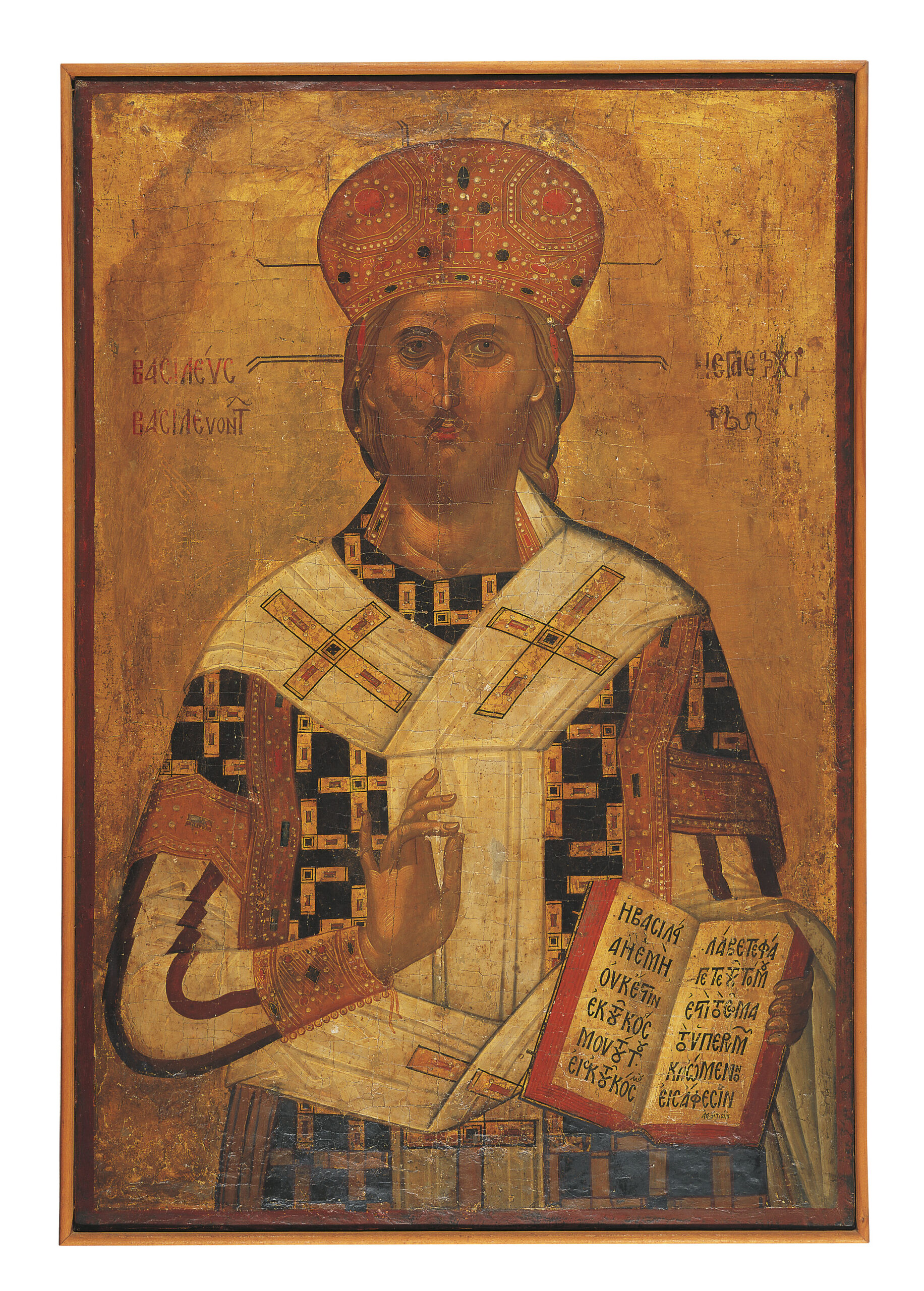

Icon depicting Christ as Great High Priest
Christ is portrayed to the waist, in frontal pose, in the prelatic vestments of a Great High Priest. On his head is a hemispherical mitre with prependulia. He holds an open gospel book in his left hand and blesses with the right.
Christ’s attire is highly austere. He wears a dark patriarchal sakkos diapered with gold crosses embellished with precious stones, which are inscribed in rectangles defined by similarly decorated lines, and beneath this an off-white sticharion, the narrow sleeves and the gold-embroidered maniples of which are visible. Over the sakkos is a white omophorion with widely-spaced gold crosses, with large red gems on the arms and a blue stone at the centre; there are two crosses on the chest, another one is at the level of the abdomen and a fourth is discerned in the over-fold of the garment, between the hands. The Lord holds an open gospel book, set slightly askew, with red-edged folios in the closed part and a large, well-written inscription from the two biblical passages that usually accompany the representation.
The imposing figure of Christ is characterized by the elegant, flawless drawing and clear out-lines, both on the features of the face with its grave ethos, and the fingers. The decoration of the vestments is spare, while the mitre is ornamented with a few precious stones and pearls in geometric design, as well as finely-drawn gold rinceaux. The halo, on which only the outline of a large cross is visible, is undecorated.
The sternness of the figure is distinguished by the assiduous rendering of some details, such as the soft over-folds on the sleeve, which the thin black stripes follow, the tiny round buttons on the maniple, well-drawn and set very close to one another with a little cord hanging at the end, the oblique placement of the voluminous gospel book, with the white pages casting a kind of shadow at the centre and curling naturally from their weight.
PUBLICATION
Chatzidakis N. 2007. Catalogue no. 128, in Skampavias K.—Chatzidakis N. (eds), Paul and Alexandra Canellopoulos Museum.Byzantine and Post-Byzantine Art, Athens, 182-185.
